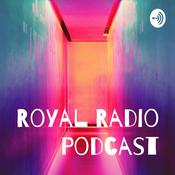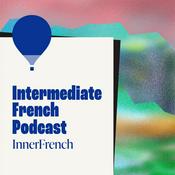121 afleveringen

Ep. 116: Chromatic Finale Of The First Half, BWV 857
18-12-2025 | 58 Min.
We’ve traveled halfway through the chromatic scale and Bach celebrates this victory with one of the more complex fugues in the collection. The subject is somber, full of half-steps and even a cross. It foreshadows the true finale at the close of all 24 pieces:This is one of the only fugues to make strict use of the countersubject, occurring in all but one (!) appearances of the subject.This motif, which we call the head of the countersubject, dominates all the episodic material both right side up, and upside down:Got Bach?The prelude contains some interesting revisions. Here is one I thought would be too subtle to hear, but I think it’s quite audible in the episode:The latter represents a rare simplification of harmony and texture in revision.The biggest addendum of all is the additional measures at the end of the piece. See how abruptly the early version ends:We survive solely on donations. Thank you for your help!We encourage our listeners to become a paid subscriberat wtfbach.substack.comFree subscriptions are also great for our numbers.You can also make a one-time donation here:https://www.paypal.me/wtfbachhttps://venmo.com/wtfbachSupporting this show ensures its longevity.Concepts Covered:J.S. Bach’s Well Tempered Clavier, Tuning, Revisions, Early verisions. The f minor prelude and fugue BWV 857, with its countersubject, analysis and study. Organ and harpsichord performances, Chromaticism, tone-rows, Get full access to W.T.F. Bach? at wtfbach.substack.com/subscribe

(5 Min. Rant) How To Twist A Shirt
15-12-2025 | 4 Min.
YouTube These Days....Enjoying your contrapuntal journey? Here’s how you can help:We encourage our listeners to become a paid subscriber atwtfbach.substack.comFree subscriptions (yes, you can subscribe for free!) are also beneficial for our numbers.You can make a one-time donation here. We run a 501(c)3, so let us know if you want a tax deduction:https://www.paypal.me/wtfbachhttps://venmo.com/wtfbachSupporting this show ensures its longevity. Thank you for your support! Get full access to W.T.F. Bach? at wtfbach.substack.com/subscribe

Ep. 115: F Major Prelude & Fugue, BWV 856
08-12-2025 | 39 Min.
Anyone else feel like we don’t have enough fugues in F major?In the last of Bach’s four layerings to the fair copy of The Well-Tempered Clavier, we see some beautiful details that would have been lost had Bach not made this last series of revisions in the 1740s. It makes you wonder if Bach would have made even more, should he have lived as long as Telemann! Bar 42 reads like this in A1-A3 into the 1740s: Then, in A4, Bach found expression in the tie and 32nd notes:Such a revision physically looks like this on fair copy:This particular revision may not be immediately clear to the naked eye, but some are (see the e minor revisions at the bottom of the post.) I believe it was X-ray technology that led to such breakthroughs in the scholarship, but some layers might be a sort of ‘white-out’ or paste that physically would stand out on the paper— any expertise would be appreciated in the comments! We know that in the Saint Matthew Passion, Bach quite literally ‘layered’ smaller pieces of paper onto the manuscript, but I think that has to do with repair, not necessarily revision. One famous layering in A4 looks as if it’s been pasted onto the manuscript… but it could be my imagination. From the first fugue, BWV 846:WTF Bach is free to all! Let’s spread the awareness of contrapuntal mastery. However, if you support financially, you’re much less likely to write parallel 5ths.There are a number of revisions also in the F Major prelude. Interestingly, the length of both prelude and fugue remains unchanged between earliest versions and the fair copy. Bach had the general harmonic rhythm right, but smooths out the insides of some measures:(Early versions, followed by the fair copy)And so on… (more demonstrations in the episode.)I finish the episode with four beautiful revisions to the e minor prelude (covered in Ep. 114) again made in A4. These are typical of his final revisions to the WTC1, bursting with 32nds. Here, one can somewhat plainly see the difference between inks:Before these revisions, the melody was as follows:We survive solely on donations. Thank you for your help!We encourage our listeners to become a paid subscriberat wtfbach.substack.comFree subscriptions are also great for our numbers.You can also make a one-time donation here:https://www.paypal.me/wtfbachhttps://venmo.com/wtfbachSupporting this show ensures its longevity.Concepts Covered:J.S. Bach’s late A4 revisions to the Well-Tempered Clavier I (BWV 846–869) in the F-major fugue BWV 856, the F major prelude, the discant adjustments that earlier manuscript stages (A1–A3) lack. The late embellishments in the E-minor prelude BWV 855, The genesis of WTK I, variant readings, fair-copy corrections, Harmonic analysis, contrapuntal rules, and the general genius of Bach. Get full access to W.T.F. Bach? at wtfbach.substack.com/subscribe

Why You Should Listen To This Podcast (Ars Podcastica)
27-11-2025 | 17 Min.
Giving thanks to all my listeners today! Why do you listen to this podcast?The original Spanish of the Borges poem, as read by my good friend, Andrea Profili.Otro poema de los donesGracias quiero dar al divinoLaberinto de los efectos y de las causasPor la diversidad de las criaturasQue forman este singular universo,Por la razón, que no cesará de soñarCon un plano del laberinto,Por el rostro de Elena y la perseverancia de Ulises,Por el amor, que nos deja ver a los otrosComo los ve la divinidad,Por el firme diamante y el agua suelta,Por el álgebra, palacio de precisos cristales,Por las místicas monedas de Ángel Silesio,Por Schopenhauer,Que acaso descifró el universo,Por el fulgor del fuego,Que ningún ser humano puede mirar sin un asombro antiguo,Por la caoba, el cedro y el sándalo,Por el pan y la sal,Por el misterio de la rosa,Que prodiga color y que no lo ve,Por ciertas vísperas y días de 1955,Por los duros troperos que en la llanuraArrean los animales y el alba,Por la mañana en Montevideo,Por el arte de la amistad,Por el último día de Sócrates,Por las palabras que en un crepúsculo se dijeronDe una cruz a otra cruz,Por aquel sueño del Islam que abarcóMil noches y una noche,Por aquel otro sueño del infierno,De la torre del fuego que purificaY de las esferas gloriosas,Por Swedenborg,Que conversaba con los ángeles en las calles de Londres,Por los ríos secretos e inmemorialesQue convergen en mí,Por el idioma que, hace siglos, hablé en Nortumbria,Por la espada y el arpa de los sajones,Por el mar, que es un desierto resplandecienteY una cifra de cosas que no sabemosY un epitafio de los vikings,Por la música verbal de Inglaterra,Por la música verbal de Alemania,Por el oro, que relumbra en los versos,Por el épico invierno,Por el nombre de un libro que no he leído:Gesta Dei per Francos,Por Verlaine, inocente como los pájaros,Por el prisma de cristal y la pesa de bronce,Por las rayas del tigre,Por las altas torres de San Francisco y de la isla de Manhattan,Por la mañana en Texas,Por aquel sevillano que redactó la Epístola MoralY cuyo nombre, como él hubiera preferido, ignoramos,Por Séneca y Lucano, de Córdoba,Que antes del español escribieronToda la literatura española,Por el geométrico y bizarro ajedrezPor la tortuga de Zenón y el mapa de Royce,Por el olor medicinal de los eucaliptos,Por el lenguaje, que puede simular la sabiduría,Por el olvido, que anula o modifica el pasado,Por la costumbre,Que nos repite y nos confirma como un espejo,Por la mañana, que nos depara la ilusión de un principio,Por la noche, su tiniebla y su astronomía,Por el valor y la felicidad de los otros,Por la patria, sentida en los jazmines,O en una vieja espada,Por Whitman y Francisco de Asís, que ya escribieron el poema,Por el hecho de que el poema es inagotableY se confunde con la suma de las criaturasY no llegará jamás al último versoY varía según los hombres,Por Frances Haslam, que pidió perdón a sus hijosPor morir tan despacio,Por los minutos que preceden al sueño,Por el sueño y la muerte, esos dos tesoros ocultos,Por los íntimos dones que no enumero,Por la música, misteriosa forma del tiempoEnjoying your contrapuntal journey? Here’s how you can help:We encourage our listeners to become a paid subscriber atwtfbach.substack.comFree subscriptions (yes, you can subscribe for free!) are also beneficial for our numbers. You can make a one-time donation here. We run a 501(c)3, so let us know if you want a tax deduction:https://www.paypal.me/wtfbachhttps://venmo.com/wtfbachSupporting this show ensures its longevity. Thank you for your support! Get full access to W.T.F. Bach? at wtfbach.substack.com/subscribe

Ep. 114: Bach Improvises On His Prelude
24-11-2025 | 54 Min.
Something’s missing:The fact that this piece was conceived independently of its solo line is a marvelous insight into Bach’s compositional process. Somewhere along the way, Bach revisited the piece and added the upper line:Here is a link to the video where Schiff talks about the Well-Tempered.And don’t miss the Kurt Vonnegut moment at 32:45!We survive solely on donations. Thank you for your help!We encourage our listeners to become a paid subscriberat wtfbach.substack.comFree subscriptions are also great for our numbers.You can also make a one-time donation here:https://www.paypal.me/wtfbachhttps://venmo.com/wtfbachSupporting this show ensures its longevity.Concepts Covered:BWV 854 and BWV 855 in the Well-Tempered Clavier, Book One, two-voice fugue, the early versions, Bach’s revision. A look at finding the right character, as seen in the Christmas Oratorio, where motivic cells show a consistent compositional logic. Bach’s improvisation, or at least improvisatory style while writing a solo line over a preformed prelude, and predetermined harmonic rhythm. We also see Bach’s use of parallel octaves in Bach, and parallel octaves in the Well-Tempered Clavier. Contrapuntal analysis, study. Get full access to W.T.F. Bach? at wtfbach.substack.com/subscribe
Meer Onderwijs podcasts
Trending Onderwijs -podcasts
Over The WTF Bach Podcast
Luister naar The WTF Bach Podcast, HELD IN EIGEN VERHAAL en vele andere podcasts van over de hele wereld met de radio.net-app

Ontvang de gratis radio.net app
- Zenders en podcasts om te bookmarken
- Streamen via Wi-Fi of Bluetooth
- Ondersteunt Carplay & Android Auto
- Veel andere app-functies
Ontvang de gratis radio.net app
- Zenders en podcasts om te bookmarken
- Streamen via Wi-Fi of Bluetooth
- Ondersteunt Carplay & Android Auto
- Veel andere app-functies


The WTF Bach Podcast
download de app,
luisteren.




































